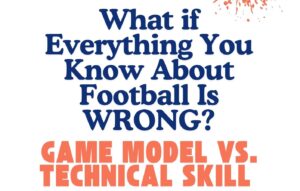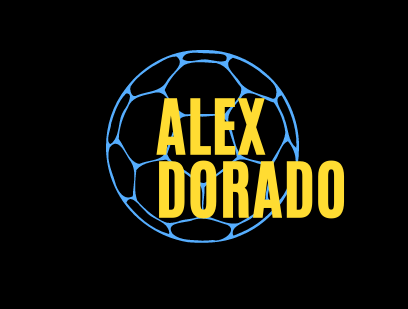
Individual Technique vs. Game Model: A Necessary Debate in the Development of Football Players
The other day, I read a post on LinkedIn by someone involved in the football industry. In it, they stated that if your child’s coach prioritizes the game model over individual technical actions, that would be a justified reason to remove your child from that club or academy. According to their view, this was a serious mistake in player development. They even called it a “Red Flag.”
But is this really true? Would a player be worse off with a coach who prioritizes the game model rather than one who focuses on training isolated technical actions?
I encourage you to doubt this theory. In fact, I encourage you to question all so-called “absolute truths” in football because they simply do not exist. Nothing that has “always been done this way” has a solid scientific basis, and in many cases, it’s not even correct.
Football as a Context-Based Game: The Limits of Isolated Technique
To begin with, football is a game, and as such, it can only be learned through the activity itself. Anyone who dissects the game to self-proclaim themselves as a “developer of future talents” is moving away from the essence of the sport. Consequently, the learning that results from their methods is about different activities or exercises—not football itself.
Players need to be placed in environments as similar as possible to the real game without losing its essence.
Why doesn’t a juggling expert with a ball succeed in elite teams? Even though they master isolated technical gestures, football requires adapting that technique to real-time decision-making.
Football is about executing technical gestures in context, within specific situations. Players must train within these situations to adjust their technique to each problem that arises. Repeating 10,000 passes in a structured drill does not create a complete footballer—it creates a specialist in that particular drill. And some trainers take this even further: these so-called “developers of future talents” correct even the hip flexion angle (is 78º good but 85º bad?) or demand that players strike the exact center of the ball.
Playing football and making 10,000 passes in real game situations, however, does help develop a better player because they learn to adapt their technique—sometimes using the inside of the foot, other times the toe, the outside, or even the sole, depending on the scenario. Is that wrong? No—if it solves the situation effectively.
I have coached players with unique technical resources who did not emerge from the so-called “School of Future Talent Development.” Take Salomón Rondón, for example—he would strike the ball from top to bottom to beat the goalkeeper. The ball would bounce off the ground, lift up, and either result in a pass or a goal.
Scientific Evidence: The Superiority of Contextualized Training
“Football is not just a game; it’s a state of mind,” said Jorge Valdano, linking emotions and play.
The game model acts as a map: it defines how the team will function collectively, providing coherent responses to different match situations. This reduces uncertainty and stress.
Moreover, working within the game model (using real-game scenarios) gives players contextualized solutions. They encounter situations similar to actual competition and decide the appropriate technical action accordingly. Renshaw et al. (2019) demonstrated that learning transfer improves when drills replicate the perceptual and temporal demands of the game.
Training exercises that are disconnected from match reality do not prepare players. Without cognitive, physical, and emotional demands similar to those of a real game, the learning is not useful. Studies such as those by Ali et al. (2007) and Gréhaigne et al. (2005) in football, as well as Boutcher & Zinsser (1990) in basketball, support this claim.
Historical Lessons: From Street Talents to Modern Legends
If your coach prioritizes the game model, you can rest assured. But to conclude (and this could spark another debate), I always repeat a phrase I once heard at Valdebebas:
“Despite us [coaches], great players still emerge.”
We are not the reason a player reaches the elite level—it is the context that shapes them. Street football forged legends like Pelé, Maradona, Amancio, and Gento. Even Messi and Cristiano Ronaldo developed in environments where the real game was the teacher, not technical manuals.
